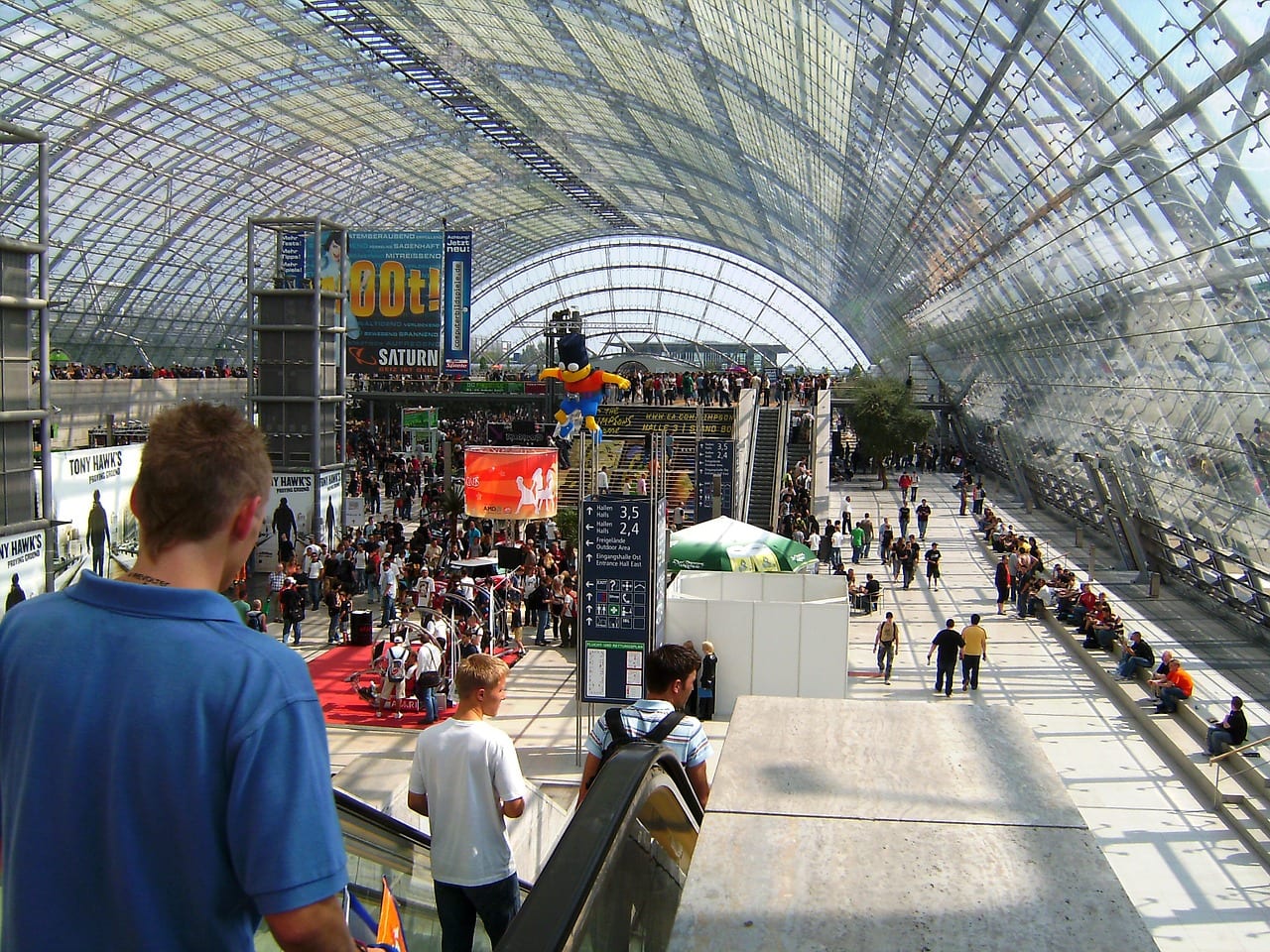What You Need to Know About Trade Show Marketing

In a world of e-commerce and online activities, trade shows can be overlooked; however, this offline alternative is far from being unimportant. Contemporary trade shows offer the opportunity for an entire industry to put their best foot forward, attracting potential investors and customers. A myriad of competitors shall be vying for trade show revenue, and the first impression of a trade show stand can make or break a sale. Naturally, the first step in creating an engaging and approachable stall is to have sturdy pop up stands; nothing is more uninviting than a collapsed stand.
Modern trade show stall formats tend to utilise open curved fabric stands as they are approachable from the front, right, and left, rather than the conventional booth or cubical format. The open format permits the engagement of more potential customers, because it’s generally more inviting and interpersonal, as customers are free to come as they please without the barrier of a booth between the salesman and the customer.
The Display
The fascination with a stall begins with what observers can passively see before they decide whether or not to further engage with the stall. Images and brand names are conventional passive marketing materials. A projected video or slideshow, however, tends to generate more interest as it allows observers to passively view a demonstration of a product or service. Passive marketing materials are designed to generate interest and proffer brand awareness, comparable to a giant advertisement.
Gimmick style materials, such as pens and caps, are popular and can be used to promote brand awareness outside of the trade show; however, these should only be handed out after a customer engagement as a reminder of the brand.
Active marketing materials then advance the cause of passive materials and commonly constitute leaflets, business cards, brochures, booklets, and even interactive displays. These materials are designed to engage potential customers on a deeper level by:
- Building customer relationships,
- Establishing the expertise of a company or business, and
- Delving into the question of ‘why’ a company or business is better than its’ competition.
Active marketing materials contain the information a potential customer needs. Interactive kiosk displays and tablet devices generally have higher levels of engagement; however, leaflets and booklets can be taken home for consideration in an environment outside the exhilaration of a trade show.
The Continuation
Trade Shows are merely an entry-point for customers and the attained sales leads must be developed into business. A resourceful method is to categorise sales leads into different priority groups, for example:
- Group 1 – Very Interested
- Group 2 – Somewhat Intrigued
- Group 3 – Hesitant
Each group must be treated differently as resources ought not to be wasted by attempting to convince hesitant customers and allowing interested customers to slip away. Naturally, very interested clients ought to be contacted first for any follow-up processes, followed by group 2 and then group 3.
The Strategy
Prior to committing to a presence at a trade show, a marketing strategy must be created. While potential customers are seeking business, a stall must still outrank its’ competition, and the mere presence at a trade show does not guarantee engagement, nor does it guarantee sales.
What are the primary and secondary goals of attending the trade show?
The objectives of trade show marketing can differ, for example, a business may wish to:
- Generate sales or leads
- Build business relationships
- Build brand awareness
- Reinforce existing leads
- Promote recent developments for training opportunities
Attaining a sale or leads is generally the primary objective; however, during a trade show, this may encounter some resistance. As a secondary objective, for group 2 and 3 leads, consider promoting other avenues of engagement, such as email / social media subscriptions, or proffering brand awareness to increase direct engagement with the company when they are considering a business proposal.
Trade show stalls ought to create a lasting impression and a memorable experience.
This is commonly assessed within the first few seconds of an engagement, which is why the first impression is crucial. Sales scripts and pitches must reflect this objective and the different avenues a potential customer could be taken down should be mapped out. This will proffer a smooth experience and when combined with active marketing materials, shall greatly assist in achieving the stall’s predetermined goals.
Trade show events differ; choose one which matches the goals of the business.
Trade shows can be in the form of:
- Networking events,
- Industry events,
- Seminars,
- Conferences,
- Sponsored events, and
- Webinars, amongst others.
If the primary objective of the business is to increase brand awareness or build business relationships, then a networking event may be the most suitable.
Finally, assess the results.
Consider what factors constitute a successful campaign, what was popular and what was not.
- Were the primary and secondary objectives achieved?
- Did leads materialise?
- Are people talking about the brand?
- How many people subscribed?
- How many are actively engaging with the company?
Let the numbers do the talking and assess the results. This shall determine whether another trade show should be attended, or whether other marketing avenues ought to be considered.




 Kory Grushka is the founder of
Kory Grushka is the founder of  Every business should have a carefully-selected arsenal of promotional tools at their disposal. Investigating and researching each one is just one way of creating a smart and savvy marketing strategy that is tailored around their business’s needs. Some might be suitable for one business, whereas others may be completely redundant – and might even form a bit of stumbling block in their overall marketing strategy. With this is in mind, here are the best promotional tools to consider for your company.
Every business should have a carefully-selected arsenal of promotional tools at their disposal. Investigating and researching each one is just one way of creating a smart and savvy marketing strategy that is tailored around their business’s needs. Some might be suitable for one business, whereas others may be completely redundant – and might even form a bit of stumbling block in their overall marketing strategy. With this is in mind, here are the best promotional tools to consider for your company. Branded products can be a great way to promote your business, and they have been used since forever. But they can also be a total waste of money when they’re not being used properly. The problem with a lot of businesses is that they just have a ton of useless products made and have no real strategy on how they’ll use them. But just like anything, you can’t just expect to have a few branded pencils laying around and expect them to do the work. In this article, we’re going to give you some of the dos and don’ts of
Branded products can be a great way to promote your business, and they have been used since forever. But they can also be a total waste of money when they’re not being used properly. The problem with a lot of businesses is that they just have a ton of useless products made and have no real strategy on how they’ll use them. But just like anything, you can’t just expect to have a few branded pencils laying around and expect them to do the work. In this article, we’re going to give you some of the dos and don’ts of